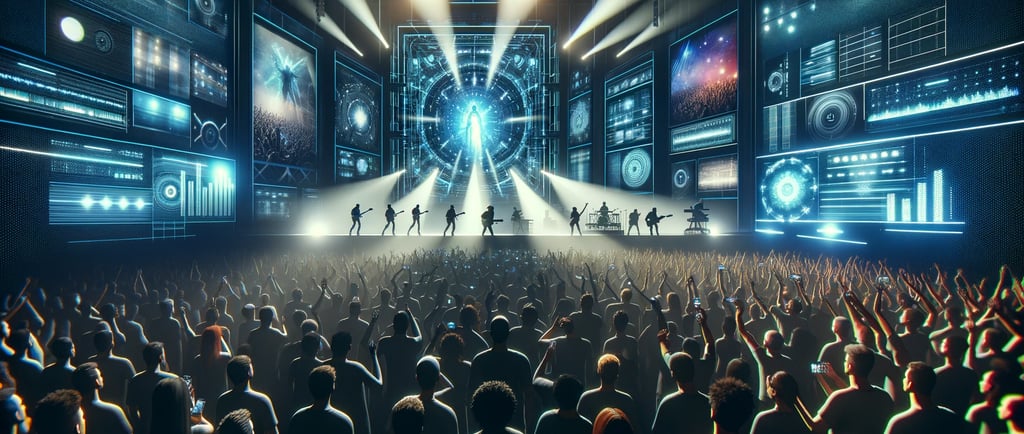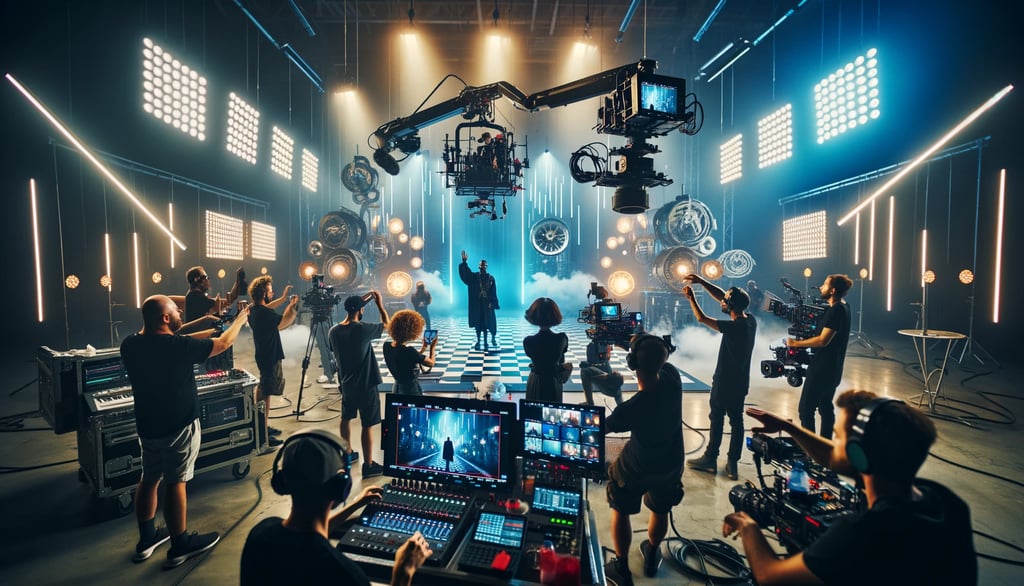The Evolution of Live Music: From Woodstock to Virtual Concerts
The journey of live music is a fascinating tale of cultural shifts, technological breakthroughs, and the unyielding human desire to connect through art. From the muddy fields of Woodstock to the pixelated realms of virtual concerts, live music has undergone a transformation that mirrors the evolution of society itself. This article explores this journey, highlighting key events and innovations along the way.
ROCK & POP CHARTS
Rico Sanchez
3/5/20243 min read


The Evolution of Live Music: From Woodstock to Virtual Concerts
The journey of live music is a fascinating tale of cultural shifts, technological breakthroughs, and the unyielding human desire to connect through art. From the muddy fields of Woodstock to the pixelated realms of virtual concerts, live music has undergone a transformation that mirrors the evolution of society itself. This article explores this journey, highlighting key events and innovations along the way.
The Era of Woodstock: A Cultural Milestone
The 1969 Woodstock Music & Art Fair is often heralded as the pinnacle of live music events, a symbol of peace, love, and music that brought together hundreds of thousands of people. It wasn't just about the music; it was a cultural phenomenon that embodied the spirit of a generation seeking change. Woodstock set the stage for future live music events, establishing a template for festivals worldwide.
Technological Advancements: Shaping the Live Experience
As technology evolved, so did the live music experience. The introduction of large-scale sound systems allowed music to envelop the crowd, creating an immersive experience. Lighting technologies and visual effects added a new dimension to performances, making concerts not just auditory but visual spectacles.
The digital age brought about significant changes, with online streaming services allowing live performances to reach a global audience. Social media platforms became new venues for artists to connect with fans, offering live streams and interactive experiences.
The Surge of Virtual Concerts: A Response to Global Events
The recent global events, notably the COVID-19 pandemic, acted as a catalyst for the rapid adoption of virtual concerts. Artists and event organizers turned to digital platforms to keep the music alive, leading to an explosion of virtual performances. These events ranged from intimate home sessions to elaborate digital worlds, offering a new form of escapism.
Virtual concerts have utilized cutting-edge technologies such as virtual reality (VR), augmented reality (AR), and 3D animation to create immersive experiences that blur the line between the physical and digital worlds. Platforms like Fortnite have hosted virtual concerts, drawing millions of participants and opening new possibilities for live music.
The Future of Live Music
As we look to the future, the live music experience continues to evolve. Hybrid events that combine physical and virtual elements are becoming more common, offering flexibility and accessibility. The potential for AI and machine learning to personalize concert experiences is vast, suggesting a future where live music is more interactive and immersive than ever.
The journey from Woodstock to virtual concerts is a testament to the resilience and adaptability of the live music industry. It reflects a world in constant flux, where music remains a universal language that adapts to meet the needs of each new generation.
Behind the Scenes: The Making of a Music Video
The production of a music video is an intricate process that combines creativity, technology, and storytelling. Directors and artists work closely to bring a song to life, often under tight deadlines and budget constraints. Interviews with directors of iconic music videos reveal a behind-the-scenes world of innovation and problem-solving.
From conceptualization to post-production, each music video is a unique project that requires a team of talented individuals. Directors must navigate logistical challenges, such as location scouting and coordinating special effects, while ensuring the video aligns with the artist's vision.
The advent of digital editing tools and visual effects has opened up new possibilities for creativity in music video production. Directors can experiment with different narratives, visual styles, and special effects to create a memorable piece that enhances the song's impact.
Behind-the-scenes footage of music videos offers a glimpse into the collaborative effort involved in these productions. From makeup artists to camera operators, each team member plays a crucial role in bringing the music video to life.
The making of a music video is a testament to the creative spirit that drives the music industry. It's a process that combines art, technology, and storytelling to create a visual representation of a song that resonates with audiences worldwide.


RSTOUR.Co
3280 Peachtree Rd NE
Atlanta, GA 30305
Contacts
ATL : +1 404.834.9059
LAX: +1 424.234.9610
© 2025 Rico Sanchez Entertainment, LLC. All rights reserved. No part of this publication may be reproduced, distributed, or transmitted in any form or by any means, including photocopying, recording, or other electronic or mechanical methods, without the prior written permission of the publisher, except in the case of brief quotations embodied in critical reviews and certain other noncommercial uses permitted by copyright law.
